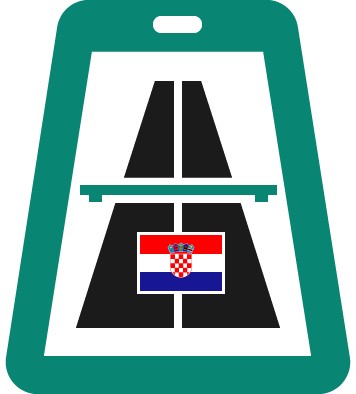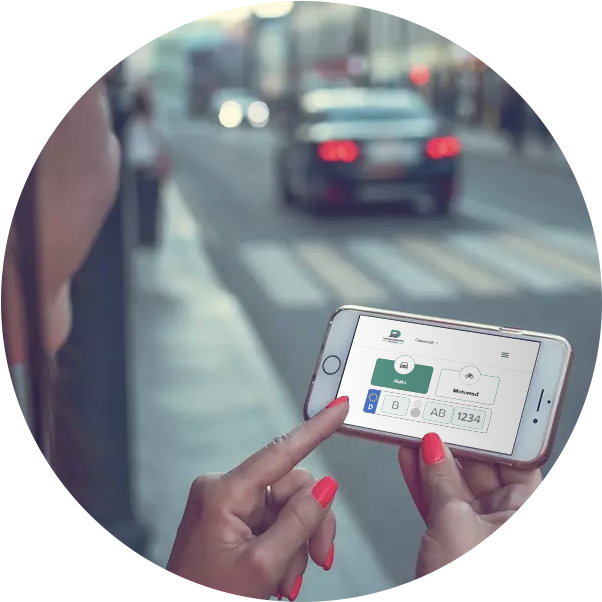
On highways with green and white signs, all vehicles must pay a road toll. The toll is currently paid when leaving the highway. The amount is based on the distance traveled and the vehicle category. No separate toll is charged for trailers and caravans. However, the presence of a trailer or caravan has an impact on the vehicle category. Motorhomes and motorcycles are also subject to the toll. You can find more information on the vehicle categories here. The switch to a digital vignette is planned for 2025. Further changes are possible with the changeover. For example, it is still unclear whether the vignette will continue to be dependent on mileage or whether it will be a flat-rate user fee with a validity period. Additional charges are levied for some tunnels, such as the Ucka Tunnel.

The issue of toll fees is a key topic for anyone who wants to use the roads in Croatia, whether as a tourist or a local. The toll system in Croatia is a complex system that is significant for both economic and infrastructural reasons. This article deals in detail with the subject to convey a comprehensive picture of the toll obligation in Croatia.
In Croatia, most road users are required to pay toll fees when using the country's highways. However, the tolls in Croatia vary depending on the vehicle class. To create a better overview, here are the different categories:
The categorization determines how much toll fees are to be paid. Therefore, it is important to clarify in advance which class your vehicle falls into. This helps avoid unpleasant surprises during toll billing.
Toll fees can currently be paid in a variety of ways, whether in cash, by credit card, or through electronic systems that automatically capture the toll. In any case, it is crucial to thoroughly inform yourself about the costs involved before driving.
The revenues from the tolls are primarily used for the maintenance and expansion of the road network. Croatia has invested heavily in its infrastructure over the past few decades, and tolls are a significant source of funding for these projects. Moreover, the toll system also promotes a certain traffic control, as the fees can make less frequented roads more attractive. Last but not least, the revenues contribute to the country's economy and indirectly support other sectors such as tourism, which benefits from well-developed roads.
In addition to categorizing vehicles, it is also important to understand the different toll systems in Croatia. There are basically two types of toll systems: the open and the closed system. Both systems unite that you pay your tolls in Croatia based on the actual distance traveled.
Open System: This system is encountered at bridges, tunnels, and shorter highway sections. Here, the toll station acts as both an entrance and exit for the highway or special route. At these points, you pay a uniform rate that varies depending on the vehicle class. If you use an On-Board Unit (OBU), the billing is automatic, which greatly simplifies the process. So, if you drive into a tunnel on the highway in Croatia, you will very likely be charged fees.
Closed System: This system is found on highways with multiple entrances and exits. When entering the highway, you take a ticket, and the toll is calculated based on the distance traveled and the vehicle category. This amount is then settled when exiting the highway.
There is currently no video toll in Croatia. However, once the digital vignette is introduced, it is expected that the country will follow suit in this regard as well. Instead, there is currently still a toll box that covers the tolls in Croatia. Such a toll box would register, for example, the distance you have traveled when leaving the highway.
The choice of system depends on the specific route or highway you want to drive. In both cases, however, it is important to keep an eye on the respective tolls on Croatian highways and payment modalities. Because no matter which system you go through, the toll is mandatory in any case, and non-payment can lead to significant penalties.
An important point that will become relevant from 2025 is the transition from adhesive vignettes to digital vignettes, also known under the name E-Vignette. This step is clearly towards modernization and is intended to simplify the process for drivers. Instead of having to buy a physical vignette and stick it on the windshield, the digital vignette can be purchased online. The control is then carried out via the license plate that was specified during booking. This not only simplifies the purchase process considerably but also minimizes the risk of counterfeits. Once the vignette is available, you can also register it on this page. The best part: toll vignettes that you register with us have no waiting time but are immediately valid.
1. You order the vignette and register it to your license plate.
2. The fact that you have paid the toll is recorded in the database, linked to your license plate.
3. The vignette is immediately valid and will also be found in controls over your license plate with the respective validity.
Not paying the tolls in Croatia is no trifle and can have serious consequences.
During a toll control, where it is found that you have not paid the toll, a fine is usually imposed. The amount of the fine can vary and depends on various factors, including the vehicle category and the duration of the offense. It is not uncommon for the fine to amount to several hundred euros.
The determination of an offense can lead to significant delays in travel in Croatia. This is particularly problematic if you have a tight schedule or need to catch a ferry, for example.
In extreme cases, further legal consequences could arise. The authorities might refer the case to the courts, which in turn could lead to a criminal record.
In very serious cases or in cases of repeated offenses, it might even lead to the seizure of the vehicle. This would not only be associated with significant inconveniences but also with further costs for the recovery of the vehicle.
Fines are not necessarily limited to Croatia. In some cases, penalties could be enforced in the driver's home country, especially if there are appropriate agreements between the countries with Croatia.
Insurance companies might consider such offenses in the risk assessment, which could lead to higher premiums or, in the worst case, loss of insurance coverage.
All these consequences underline the importance of taking toll fees in Croatia seriously and paying them properly. They are an essential part of the traffic rules of the country and contribute to maintaining the infrastructure. Therefore, it is in everyone's interest to strictly adhere to the rules and pay the toll fees promptly to ensure a smooth journey.
Tolls in Croatia are an important and inevitable topic for anyone wanting to use the country's highways. They finance infrastructure projects and thus have indirect positive effects on other sectors such as tourism. From 2025, purchasing a vignette will be much easier and safer with the introduction of the digital vignette. Non-payment is not an option and can lead to serious penalties. Therefore, it is in everyone's interest to adhere to the rules and pay the toll fees promptly for a smooth journey.
Once the Croatia vignette is digitally available, you can easily pay your toll for Croatia through this page.
Kontaktirajte našu službu za korisnike
Pondjeljak - Nedjelja
Dostupni za vas svakodnevno u roku od nekoliko sati.
Već smo odgovorili na neka često postavljena pitanja. Molimo pogledajte sekciju "Česta pitanja"
